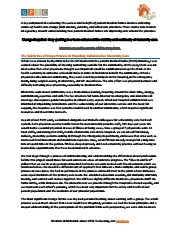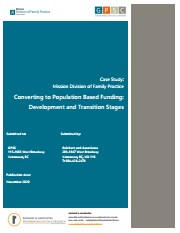3 public records – page 1 of 1. — Log in to view all records
Centralized Waiting Lists for Unattached Patients in Primary Care: Learning from an Intervention Implemented in Seven Canadian Provinces - Research Paper
https://www.jcc-resourcecatalogue.ca/en/permalink/divisionresource1159
- Published Date
- 2018-07-10
- Description
- "This article was referenced during the Centralized Waitlist- Patient Attachment Mechanisms webinar. It describes different models of centralized waitlists for unattached patients implemented in seven Canadian provinces and identifies common issues in the implementation of these centralized waitlists."
- Personal Author
- Mylaine Breton, Sabrina T. Wong, Mélanie Ann Smithman, Sara Kreindler, Jalila Jbilou, Emily Gard Marshall, Jason Sutherland, Astrid Brousselle, Jay Shaw, Valorie A. Crooks, Damien Contandriopoulos, Martin Sasseville and Michael Green
- Published Date
- 2018-07-10
- Topics
- Attachment
- Event
- Centralized Waitlist- Patient Attachment Mechanisms Webinar
- Resource Type
- Article
- Research Paper
- File Type
- Web page
- Originating web page
- https://www.researchgate.net/publication/326378660_Centralized_Waiting_Lists_for_Unattached_Patients_in_Primary_Care_Learning_from_an_Intervention_Implemented_in_Seven_Canadian_Provinces
- Citation
- Breton, M., Wong, S. T., Smithman, M. A., Kreindler, S., Jbilou, J., Marshall, E. G., ... Green, M. (2018). Centralized Waiting Lists for Unattached Patients in Primary Care: Learning from an Intervention Implemented in Seven Canadian Provinces. Healthcare Policy, 13(4). Retrieved from https://www.researchgate.net/publication/326378660_Centralized_Waiting_Lists_for_Unattached_Patients_in_Primary_Care_Learning_from_an_Intervention_Implemented_in_Seven_Canadian_Provinces
- Description
- This article was referenced during the Centralized Waitlist- Patient Attachment Mechanisms webinar. It describes different models of centralized waitlists for unattached patients implemented in seven Canadian provinces and identifies common issues in the implementation of these centralized waitlists.
MSC Story - The Subtleties of Group Process in Providing Collaborative Maternity Care
https://www.jcc-resourcecatalogue.ca/en/permalink/divisionresource1534
- Published Date
- 2019
- Link to File
- /media/divresources/MSCStory_TheSubtletiesofGroupProcessinProvidingCollaborativeMaternityCare.pdf
- Description
- "These most significant change (MSC) stories take readers on a journey toward understanding how patient medical homes are removing barriers to care around the province. This story is about how working in a team enhanced the stability and continuity of maternity care."
- Corporate Author
- General Practice Services Committee
- Published Date
- 2019
- Resource Type
- Story
- File Type
- Link to File
- /media/divresources/MSCStory_TheSubtletiesofGroupProcessinProvidingCollaborativeMaternityCare.pdf
- Description
- These most significant change (MSC) stories take readers on a journey toward understanding how patient medical homes are removing barriers to care around the province. This story is about how working in a team enhanced the stability and continuity of maternity care.
Converting to Population Based Funding: Development and Transition Stages (Executive Summary)
https://www.jcc-resourcecatalogue.ca/en/permalink/divisionresource1563
- Division
- Mission Division of Family Practice
- Published Date
- 2020-11
- Description
- "Processes and initial outcomes of converting the clinic from a fee-for-service model to a population-based model."
- Division
- Mission Division of Family Practice
- Corporate Author
- General Practice Services Committee
- Mission Division of Family Practice
- Published Date
- 2020-11
- Resource Type
- Summary
- File Type
- Description
- Processes and initial outcomes of converting the clinic from a fee-for-service model to a population-based model.


